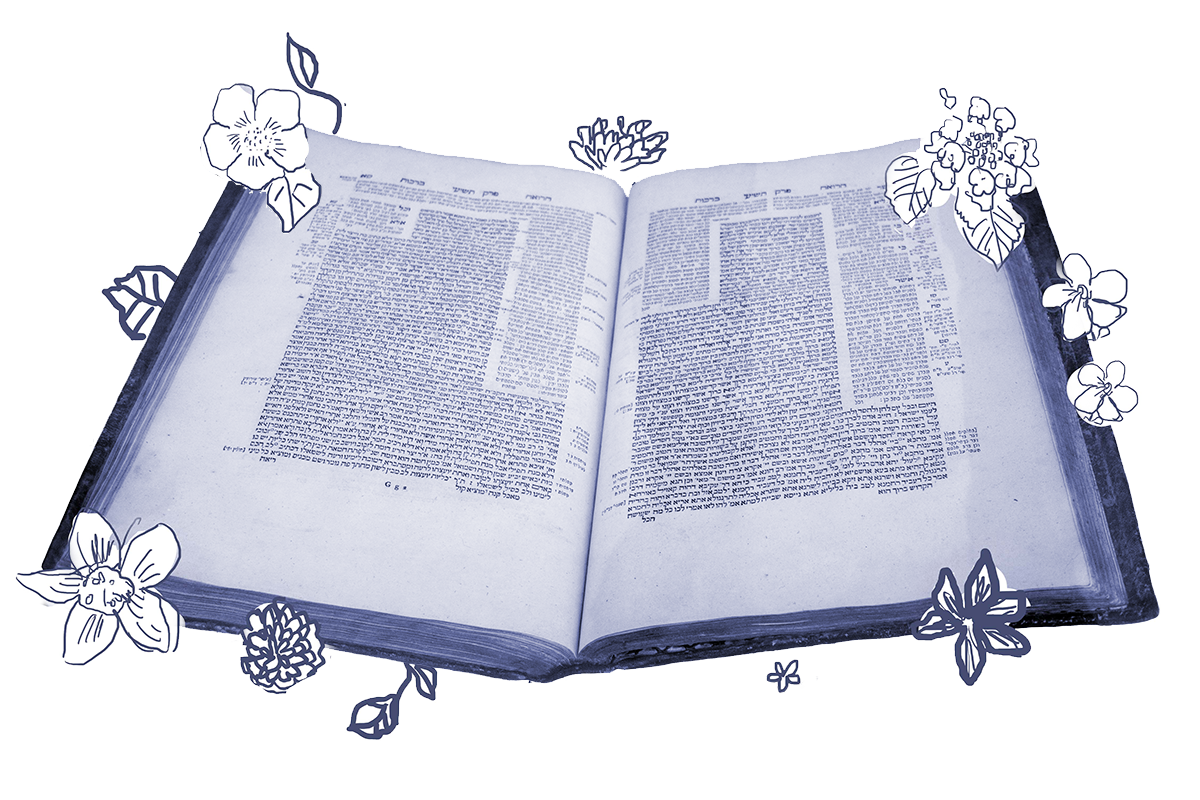Having quoted the school of Rabbi Yannai on another matter, the Gemara shares an additional teaching from the school that is unrelated to the previous discussion:
With regard to prayer and with regard to tefillin, the measure is four kav.
At first glance, this statement seems quite odd. A kav is a unit of volume equivalent to 24 eggs; four kavs are a little more than a gallon. It makes sense to talk about olives or flour in terms of kavs, but who measures prayer by volume? Thankfully, the Gemara provides a beraita to bring some clarity to the teaching:
What is the relevance of this measure with regard to prayer? It is taught in a beraita: With regard to one who carries a load on his shoulder and the time for prayer arrives, if the load is less than four kav, they lower it behind them and pray. If the load is four kav or more, they place it on the ground and pray.
With your help, My Jewish Learning can provide endless opportunities for learning, connection and discovery.
If you are traveling while carrying a burden and it’s time to pray, you are supposed to stop to do so. If you’re carrying a small load, you can take it down off your shoulder and hold onto it while you pray. But if it has a bulk of four kav or more, you should set down your burden to prevent it from interfering with your concentration while you pray.
Regarding tefillin, a second beraita is cited:
If one was carrying a load on their head and they had phylacteries on their head, if the phylacteries were being crushed under the load it is forbidden to leave them on their head, but if they were not being crushed, it is permitted.
Tefillin come in pairs; one for the arm and one for the head. While in the modern day Jews wear tefillin for weekday morning prayers, in talmudic times some adopted the practice of wearing them all day. If you’ve ever had to carry a bulky item while simultaneously wearing tefillin then you are aware that these ritual items were not designed with labor in mind. Their straps are strong enough to hold them in place during prayer, but would interfere with carrying large packages from one place to another.
The head tefilla (the singular for tefillin) is a box that contains parchment with biblical verses that is affixed to one’s head by a leather strap. If one were simultaneously wearing tefillin and carrying a load on one’s head, not only would the tefilla potentially get in the way, but the pressure from the load might damage it. To prevent this from happening, a person is allowed to remove the tefilla. And what size load is the threshold for doing so? Four kavs.
There is, however, another proposed solution: If one is wearing tefillin and has to carry a bulky load, Rabbi Hiyya suggests securing the head tefilla to the arm to prevent it from being damaged or soiled. And the sages of the school of Sheila demand even greater precaution:
It is forbidden to place on the head of one who is wearing phylacteries even the scarf in which they are wrapped.
Forget about four kavs, according to the school or Sheila you can’t put anything on top of your head tefilla, even the bag (or scarf) in which you store it!
What began as a confusing statement turns out to offer some intuitive and practical advice for prayer: Don’t pray with a bulky load in hand; set it aside before you begin. And when you are wearing tefillin, make sure that you don’t carry anything that will disrupt or damage them.
Having quoted the school of Rabbi Yannai on another matter, the Gemara shares an additional teaching from the school that is unrelated to the previous discussion:
With regard to prayer and with regard to tefillin, the measure is four kav.
At first glance, this statement seems quite odd. A kav is a unit of volume equivalent to 24 eggs; four kavs are a little more than a gallon. It makes sense to talk about olives or flour in terms of kavs, but who measures prayer by volume? Thankfully, the Gemara provides a beraita to bring some clarity to the teaching:
What is the relevance of this measure with regard to prayer? It is taught in a beraita: With regard to one who carries a load on his shoulder and the time for prayer arrives, if the load is less than four kav, they lower it behind them and pray. If the load is four kav or more, they place it on the ground and pray.
If you are traveling while carrying a burden and it’s time to pray, you are supposed to stop to do so. If you’re carrying a small load, you can take it down off your shoulder and hold onto it while you pray. But if it has a bulk of four kav or more, you should set down your burden to prevent it from interfering with your concentration while you pray.
Regarding tefillin, a second beraita is cited:
If one was carrying a load on their head and they had phylacteries on their head, if the phylacteries were being crushed under the load it is forbidden to leave them on their head, but if they were not being crushed, it is permitted.
Tefillin come in pairs; one for the arm and one for the head. While in the modern day Jews wear tefillin for weekday morning prayers, in talmudic times some adopted the practice of wearing them all day. If you’ve ever had to carry a bulky item while simultaneously wearing tefillin then you are aware that these ritual items were not designed with labor in mind. Their straps are strong enough to hold them in place during prayer, but would interfere with carrying large packages from one place to another.
The head tefilla (the singular for tefillin) is a box that contains parchment with biblical verses that is affixed to one’s head by a leather strap. If one were simultaneously wearing tefillin and carrying a load on one’s head, not only would the tefilla potentially get in the way, but the pressure from the load might damage it. To prevent this from happening, a person is allowed to remove the tefilla. And what size load is the threshold for doing so? Four kavs.
There is, however, another proposed solution: If one is wearing tefillin and has to carry a bulky load, Rabbi Hiyya suggests securing the head tefilla to the arm to prevent it from being damaged or soiled. And the sages of the school of Sheila demand even greater precaution:
It is forbidden to place on the head of one who is wearing phylacteries even the scarf in which they are wrapped.
Forget about four kavs, according to the school or Sheila you can’t put anything on top of your head tefilla, even the bag (or scarf) in which you store it!
What began as a confusing statement turns out to offer some intuitive and practical advice for prayer: Don’t pray with a bulky load in hand; set it aside before you begin. And when you are wearing tefillin, make sure that you don’t carry anything that will disrupt or damage them.
Read or print all of Bava Metzia 105 on Sefaria.
This piece originally appeared in a My Jewish Learning Daf Yomi email newsletter sent on June 12, 2024. If you are interested in receiving the newsletter, sign up here.



